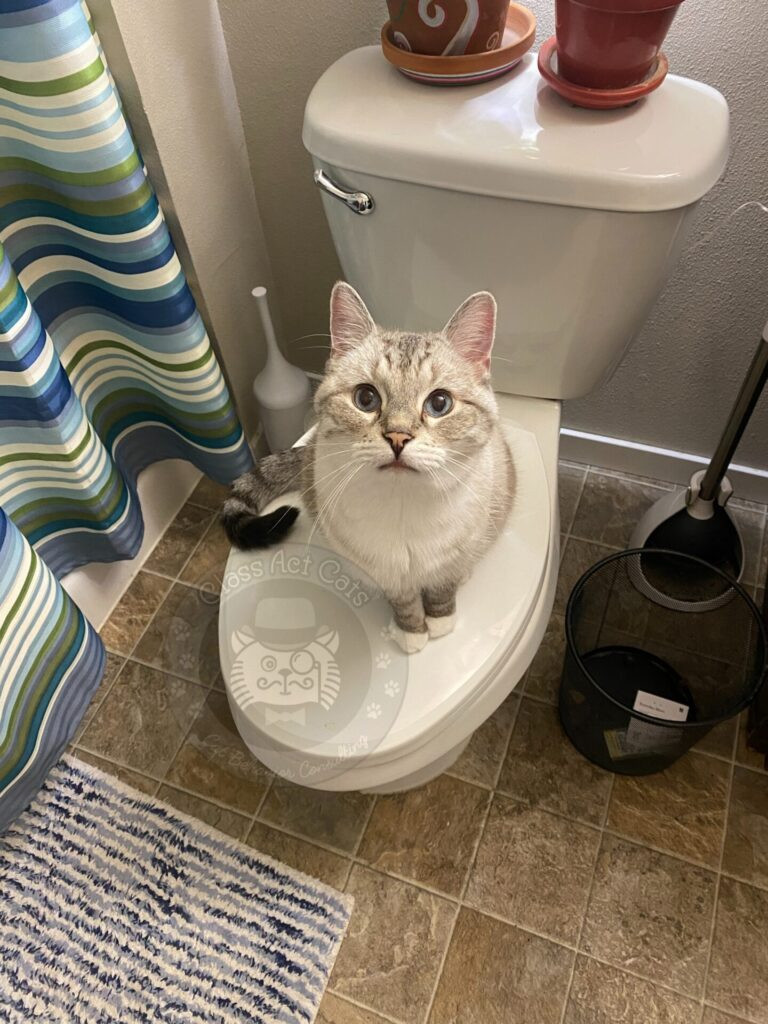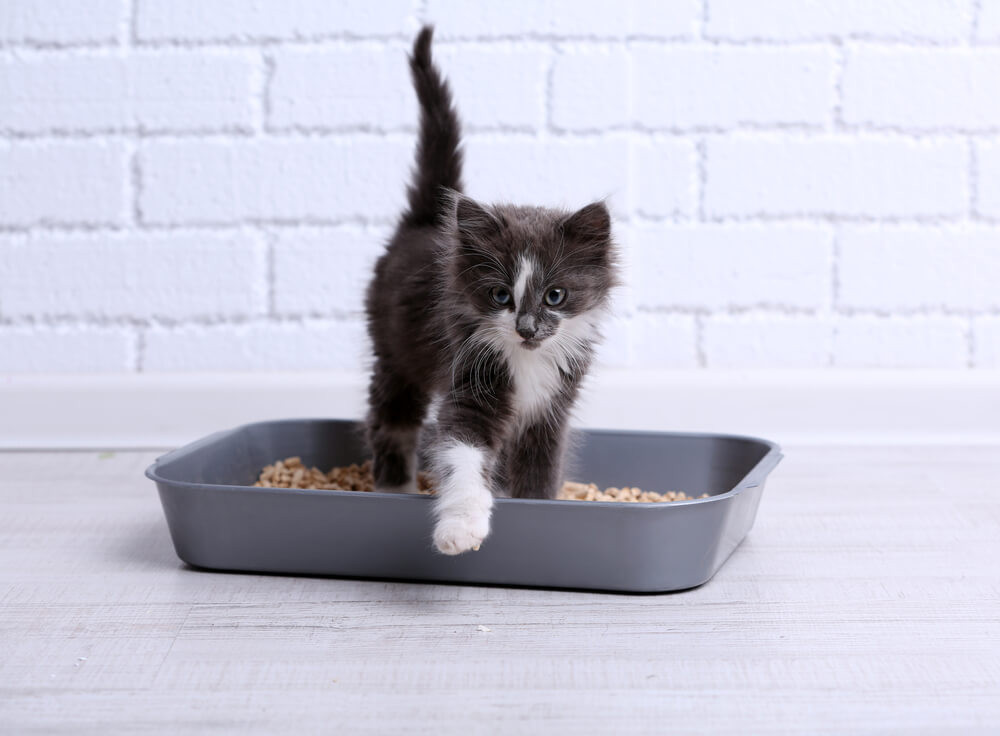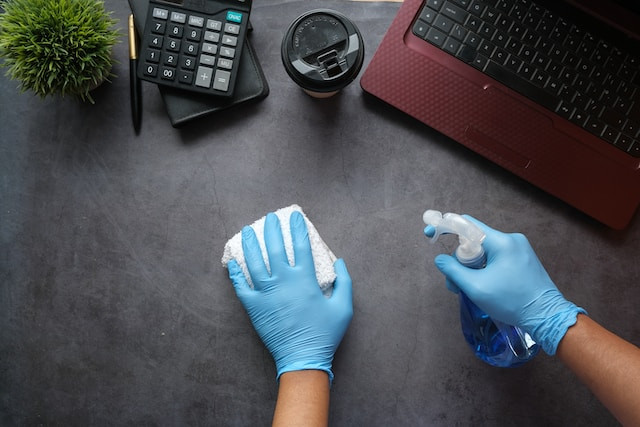Dealing with cat urine outside the litter box is a common frustration for cat owners. The pungent smell can permeate your home, and if not cleaned properly, it can become a recurring issue. The key to effectively eliminating cat urine odor and stains lies in using the right product: Enzyme Cleaner For Cat Urine. This guide, crafted by a litter box usage expert, will walk you through why enzyme cleaners are essential and how to use them to achieve a truly fresh and clean home, surpassing basic cleaning methods and ensuring a healthier, happier environment for both you and your feline companion.
Understanding Cat Urine and Why Enzyme Cleaners Are a Must
Cat urine’s notorious odor isn’t just unpleasant; it’s complex and persistent. Unlike regular spills, cat urine contains specific compounds that bind to surfaces and linger. To understand why enzyme cleaner for cat urine is the superior solution, let’s delve into the science behind the smell.
The Science of Cat Pee Stink
The primary culprit behind the intense smell of cat urine is a compound called felinine. This sulfur-containing amino acid is unique to cats. As cat urine dries, felinine breaks down and transforms into other sulfurous compounds, which are responsible for that acrid, ammonia-like odor we recognize so well.
 Zoloft the cat sits on a closed toilet looking at the camera
Zoloft the cat sits on a closed toilet looking at the camera
Zoloft the cat, likely enduring lingering urine odors before proper cleaning methods were understood, highlighting the importance of effective cat urine odor removal.
Adding to the complexity is uric acid, another component of cat urine. Uric acid crystals are not water-soluble and can remain embedded in porous materials even after regular cleaning attempts. These crystals reactivate and release odor when exposed to humidity, causing that frustrating “returning smell” even after you thought you’d cleaned it up. This is why simply using soap and water or general household cleaners often fails to eliminate cat urine odor permanently.
Why Regular Cleaners Fall Short
Common household cleaners, bleach, or even soap and water are often ineffective against cat urine because they don’t address the root cause of the odor – the felinine and uric acid. These cleaners may mask the smell temporarily or address surface stains, but they don’t break down the odor-causing molecules. Bleach, in particular, is not recommended for cleaning cat urine and can even be harmful and create toxic fumes when mixed with ammonia present in urine.
This is where enzyme cleaner for cat urine comes into play.
How Enzyme Cleaners for Cat Urine Work Their Magic
Enzyme cleaners for cat urine are specifically formulated to target and break down the organic compounds in cat urine that cause odor and stains. They contain enzymes, which are specialized proteins that act as catalysts. These enzymes work by accelerating the breakdown of complex molecules into simpler, odorless substances.
In the case of cat urine, the enzymes in these specialized cleaners target:
- Uric acid crystals: Enzymes break down the uric acid, eliminating the source of the lingering odor and preventing reactivation.
- Felinine and other odor-causing compounds: Enzymes dismantle these compounds, neutralizing the pungent smell at its source.
By using an enzyme cleaner for cat urine, you’re not just masking the odor; you’re actually eliminating it. This is crucial for not only creating a pleasant environment for yourself but also for your cat. Cats have a much stronger sense of smell than humans, and lingering urine odors, even faint ones we can’t detect, can encourage them to re-mark the same spot.
Choosing the Best Enzyme Cleaner for Cat Urine
With numerous enzyme cleaners for cat urine available on the market, it’s important to choose an effective and reliable product. Here’s what to look for:
Key Features of a High-Quality Enzyme Cleaner
- Specifically formulated for cat urine: Ensure the product explicitly states it’s designed for cat urine or pet urine, and ideally mentions “enzymatic formula”. Avoid general cleaners or those primarily for dog urine, as cat urine has a unique composition.
- “Professional strength” or “Maximum strength”: Opt for products that are concentrated enough to effectively break down uric acid and strong odors.
- Reputable brands: Consider brands known for pet-specific cleaning products. Rocco and Roxie, Angry Orange (enzymatic formula), and Active’s Enzymatic Cleaner are examples of brands frequently recommended by pet experts.
- Reliable source: Purchase your enzyme cleaner for cat urine from reputable retailers or directly from the manufacturer to ensure product freshness and efficacy. Enzymes can degrade over time, so avoid buying in bulk unless you plan to use it quickly and be wary of deeply discounted products from unknown sellers. Buying from official stores like Rocco and Roxie Supply Co. store on Amazon can help ensure you get a fresh, potent product.
Beyond Enzymes: Oxy Cleaners and Deodorizers as Supplements
While enzyme cleaner for cat urine is the core solution, some products incorporate oxy cleaners or deodorizers as supplementary agents. Oxy cleaners can help further break down stains and provide an additional layer of odor control. Deodorizers can temporarily mask any residual scent while the enzymes work to eliminate the source.
Using an oxy cleaner or pet odor eliminator after treating the area with an enzyme cleaner for cat urine can be a beneficial two-step approach, especially for stubborn stains and odors. For example, after enzyme treatment, a portable carpet cleaner like the Bissell Pet Deluxe Carpet Cleaner used with an oxy-based pet stain cleaner can enhance odor removal.
 A grey kitten stepping out of a litter box.
A grey kitten stepping out of a litter box.
A grey kitten emerging from a clean litter box, emphasizing the goal of odor-free homes and happy cats through effective enzyme cleaning.
Step-by-Step Guide: How to Effectively Use Enzyme Cleaner for Cat Urine
Simply spraying enzyme cleaner for cat urine and wiping it up may not be enough for complete odor and stain removal. Proper technique is crucial. Here’s a comprehensive guide to cleaning cat urine effectively on various surfaces:
General Cleaning Best Practices
- Act Fast: The sooner you address the urine spot, the better. Fresh urine is easier to remove and less likely to deeply penetrate surfaces.
- Blot, Don’t Rub: Gently blot up as much fresh urine as possible with paper towels or a clean cloth, working from the outside of the stain inwards to prevent spreading.
- Test in an Inconspicuous Area: Before applying any enzyme cleaner for cat urine to a visible area, test it on a hidden spot to ensure it doesn’t damage or discolor the material.
- Apply Enzyme Cleaner Generously: Saturate the urine stain thoroughly with enzyme cleaner for cat urine, ensuring it reaches all areas affected by the urine, including the padding beneath carpets or within furniture cushions if necessary.
- Let it Dwell: Allow the enzyme cleaner for cat urine to sit on the stain for the time recommended by the manufacturer, or even longer for set-in stains. This dwell time is crucial for the enzymes to break down the urine components effectively.
- Blot Again: After the dwell time, blot up the cleaner and any remaining urine residue with a clean cloth or paper towels. Avoid rinsing with water, as this can spread the urine and uric acid.
- Repeat if Necessary: For persistent odors or stains, repeat the application of enzyme cleaner for cat urine multiple times. Patience and repeated treatments are often key to complete removal.
- Air Dry: Allow the cleaned area to air dry completely. Avoid using heat, as heat can set stains and odors.
- Final Clean (Optional): Once dry and odor-free, you can follow up with an oxy cleaner or pet odor eliminator for an extra layer of freshness, especially on carpets or upholstery.
Surface-Specific Cleaning Tips
- Furniture and Mattresses: For upholstered furniture and mattresses, urine can penetrate deeply. Consider using a syringe (like a large bore needle without the needle for safety) to inject enzyme cleaner for cat urine directly into the padding or foam. For washable upholstery, soak it overnight in a diluted enzyme cleaner solution before laundering with an enzymatic laundry detergent like ACTIVE’s Pet Laundry Detergent. Remember to test for colorfastness first. Protect mattresses and furniture after cleaning with waterproof covers like waterproof mattress cover or furniture cover to prevent future urine damage.
- Carpets: For carpets, follow the general cleaning steps. For deep cleaning, consider using a carpet power cleaner with an enzyme cleaner for cat urine formulated for machines. You can pre-treat the stain by soaking it with enzyme cleaner overnight and then using the power cleaner the next day.
- Rugs: Machine-washable rugs are a great option for pet owners. Wash affected rugs with an enzymatic laundry detergent. For delicate rugs, professional cleaning is recommended.
- Hardwood Floors: Wood is porous and can be damaged by urine. Act quickly to wipe up fresh urine. Use enzyme cleaner for cat urine sparingly, applying a small amount, letting it sit briefly (manufacturer’s minimum time), and then wiping it up immediately. Repeat as needed, allowing the wood to dry completely between applications. Be aware that wood may warp or discolor, and refinishing may be necessary for severe cases.
 A person cleaning cat urine with a squirt bottle
A person cleaning cat urine with a squirt bottle
Using a squirt bottle for targeted application of enzyme cleaner on cat urine stains, a practical method for effective cleaning.
What to Avoid When Cleaning Cat Urine
- Avoid Water Alone: Simply rinsing with water can spread the urine stain and odor.
- Don’t Rub Vigorously: Rubbing can push urine deeper into fibers and damage surfaces. Always blot gently.
- Skip Bleach: Bleach is not effective for removing cat urine odor and can be harmful.
- Don’t Use Heat Prematurely: Heat can set stains and odors before the enzyme cleaner has had a chance to work. Air dry cleaned areas.
Troubleshooting: When Enzyme Cleaners Don’t Seem to Work
If you’ve used enzyme cleaner for cat urine and are still experiencing lingering odors or stains, consider these troubleshooting tips:
- Check the Cleaner: Ensure your enzyme cleaner for cat urine is not expired, is being used according to directions, and is appropriate for the surface you are cleaning.
- Try a Different Product: Not all enzyme cleaners are created equal. If one product isn’t working, try a different brand or formulation. Rocco and Roxie is often recommended, but other effective options exist.
- Ensure Adequate Saturation and Dwell Time: Make sure you are using enough enzyme cleaner for cat urine to fully saturate the stain and allowing it to dwell for the recommended time, or even longer.
- Consider Professional Help: For severe or persistent urine issues, especially on carpets or upholstery, consider hiring a professional cleaning service experienced in pet stain and odor removal. Ensure they use enzyme cleaners for cat urine specifically.
Preventing Future Cat Urine Accidents
While enzyme cleaner for cat urine is essential for cleaning up accidents, addressing the underlying cause of your cat urinating outside the litter box is crucial for preventing recurrence. Medical issues, stress, litter box aversion, or territorial marking can all contribute to inappropriate urination. Consulting with a veterinarian to rule out medical problems and seeking guidance from a cat behaviorist can help identify and resolve the root cause of the issue.
In the meantime, protect vulnerable areas with waterproof furniture covers, mattress protectors, and machine-washable rugs or reusable pee pads. Monitoring your cat’s behavior and using a video camera can help identify patterns and triggers for accidents.
 A cat with a silly face, implying the owner's relief after successfully cleaning cat urine
A cat with a silly face, implying the owner's relief after successfully cleaning cat urine
A happy cat, representing a clean and comfortable home environment achieved through diligent cleaning and the use of enzyme cleaners.
Conclusion: Enzyme Cleaner for Cat Urine – Your Best Weapon Against Odor and Stains
Cleaning cat urine is undoubtedly challenging, but with the right approach and, most importantly, the right product – enzyme cleaner for cat urine – you can effectively eliminate odors and stains. Remember that consistent and thorough cleaning is key, and addressing the underlying reasons for your cat’s accidents is essential for long-term success. For items that are heavily soiled or difficult to clean, or if you’re feeling overwhelmed, don’t hesitate to consider replacement. Prioritizing a clean, odor-free home benefits both you and your cat, creating a more harmonious and enjoyable living space.
Need help getting your cat to use the litter box?
Set Up a Consultation
